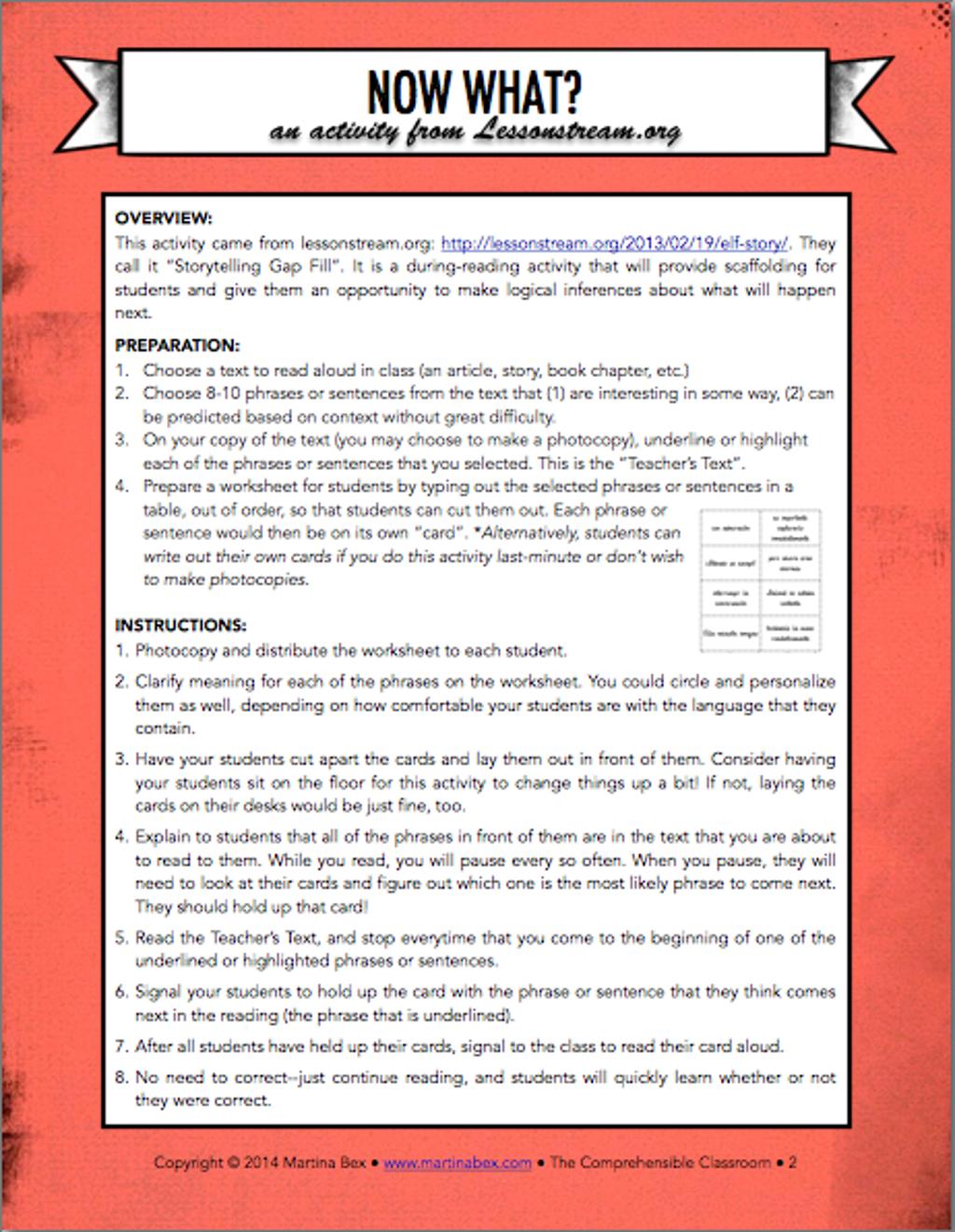I found this activity several years ago on Lessonstreams.org, and it has been a staple in my during-reading activities rotation. Because novels are an important part of my Spanish 1 and Spanish 2 curricula, we do a lot of reading in class! I'm always on the prowl for new activities that I can use while reading to maintain engagement as we read each chapter of a novel together as a class. This activity was originally called "Storytelling Gap Fill", and you can download two sample lessons in which it is used from Lessonstreams here. If you purchased the Teacher's Guide that I wrote for Brandon Brown versus Yucatán, you have already seen it as it was one of the during-reading activities that I included for use with the novel by Carol Gaab and Kristy Placido.
"Now What?", as I call it, is a during-reading activity that will provide scaffolding for students and give them an opportunity to make logical inferences about what will happen next. (Hey, there's a great sentence to include in a formal lesson plan, eh?)

PREPARATION:
- Choose a text to read aloud in class (an article, story, book chapter, etc.)
- Choose 8-10 phrases or sentences from the text that (1) are interesting in some way, (2) can be predicted based on context without great difficulty.
- On your copy of the text (you may choose to make a photocopy), underline or highlight each of the phrases or sentences that you selected. This is the “Teacher’s Text”.
- Prepare a worksheet for students by typing out the selected phrases or sentences in a table, out of order, so that students can cut them out. Each phrase or sentence would then be on its own “card”. *Alternatively, students can write out their own cards if you do this activity last-minute or don’t wish to make photocopies.
INSTRUCTIONS:
- Photocopy and distribute the worksheet to each student.
- Clarify meaning for each of the phrases on the worksheet. You could circle and personalize them as well, depending on how comfortable your students are with the language that they contain.
- Have your students cut apart the cards and lay them out in front of them. Consider having your students sit on the floor for this activity to change things up a bit! If not, laying the cards on their desks would be just fine, too.

- Explain to students that all of the phrases in front of them are in the text that you are about to read to them. While you read, you will pause every so often. When you pause, they will need to look at their cards and figure out which one is the most likely phrase to come next. They should hold up that card!
- Read the Teacher’s Text, and stop every time that you come to the beginning of one of the underlined or highlighted phrases or sentences.
- Signal your students to hold up the card with the phrase or sentence that they think comes next in the reading (the phrase that is underlined).
- After all students have held up their cards, signal to the class to read their card aloud.
- No need to correct--just continue reading, and students will quickly learn whether or not they were correct.
I created a sample activity that you can download here for use with Carrie Toth's newest novel, Bianca Nieves y los 7 toritos--a novel based on 200 high frequency structures and written in the past tense, making for a great read when you are first beginning to target the past tenses.




